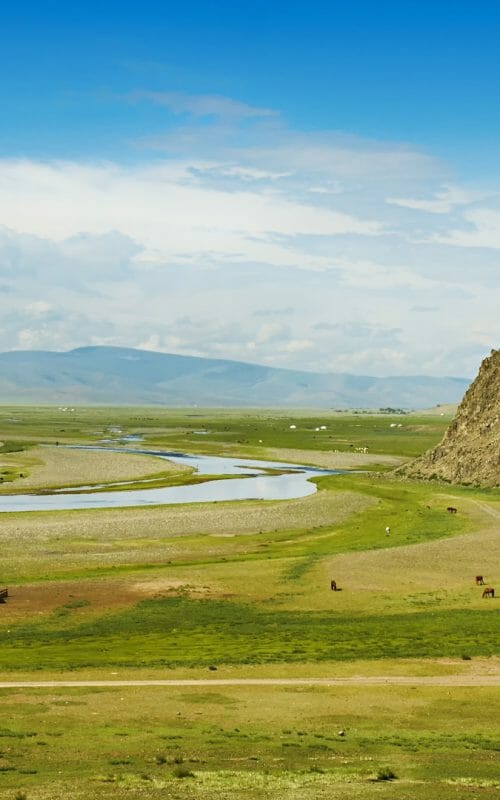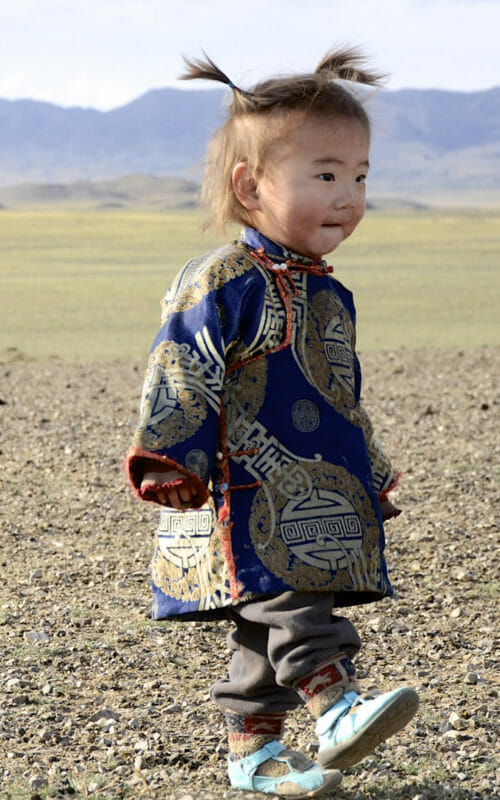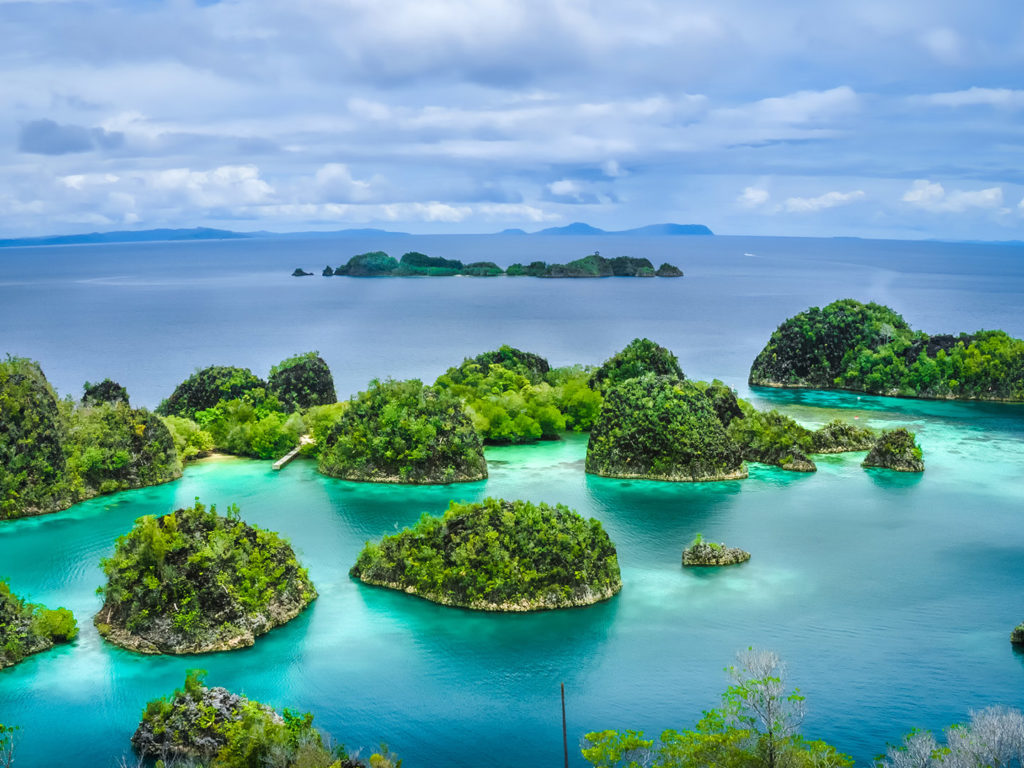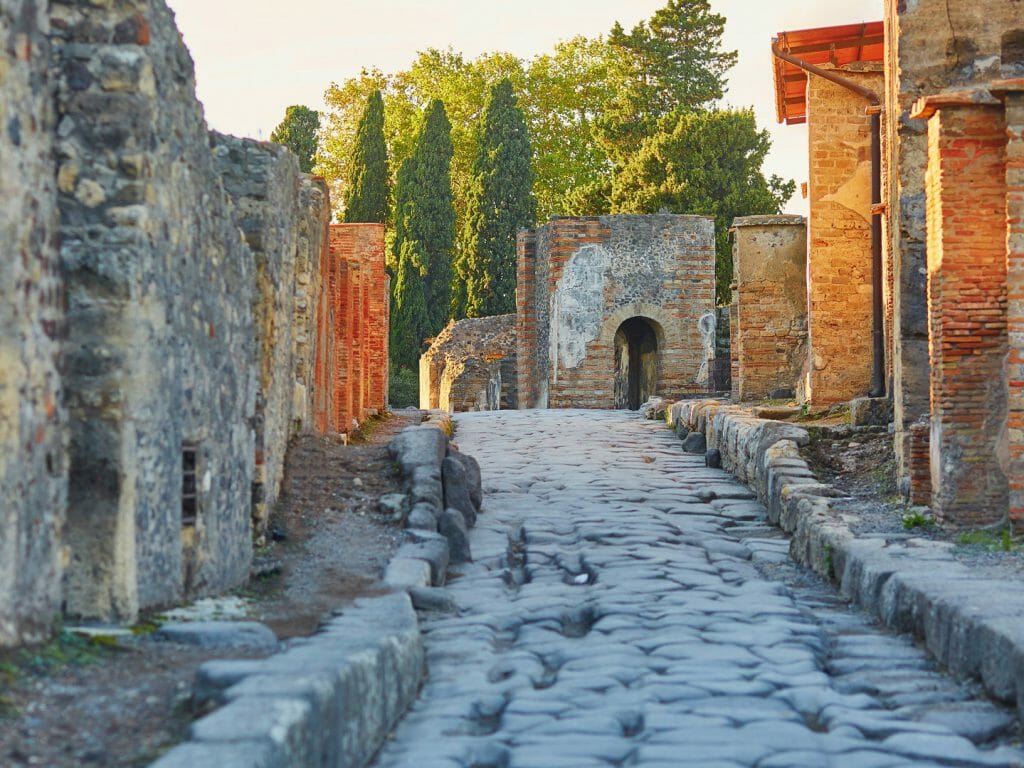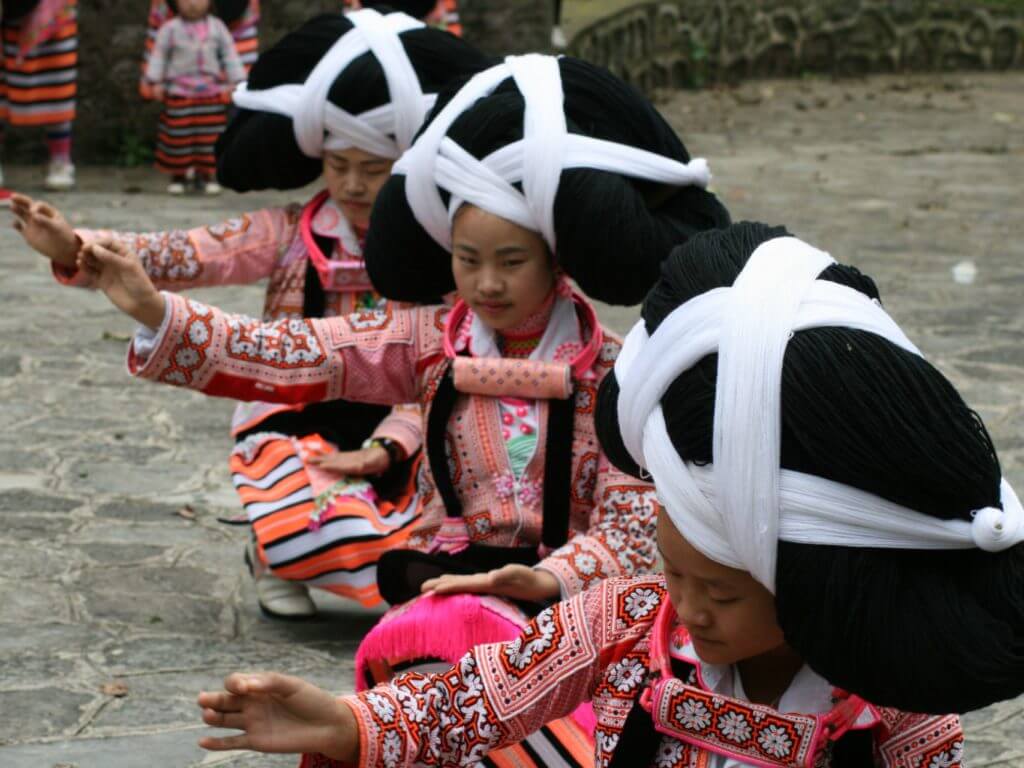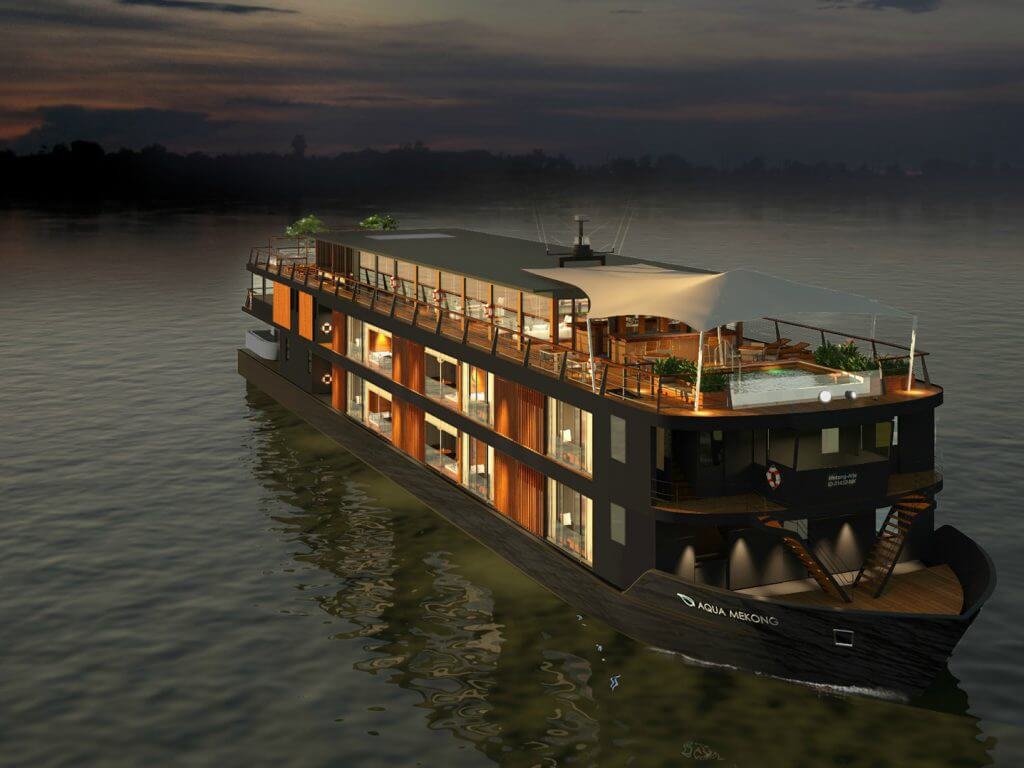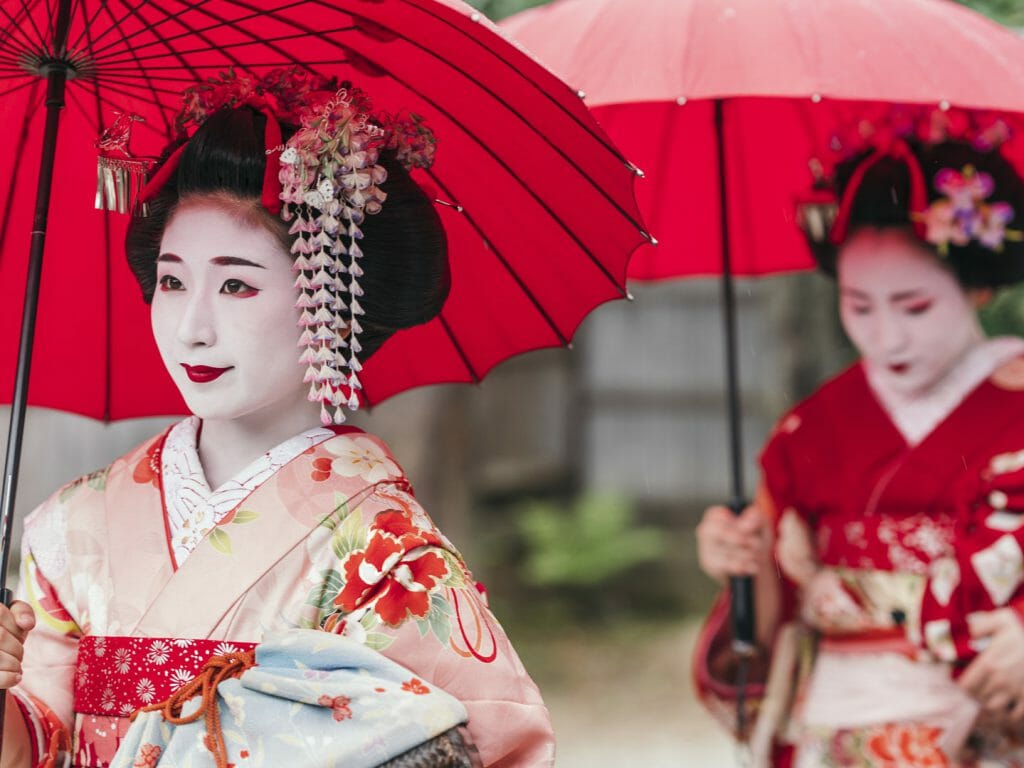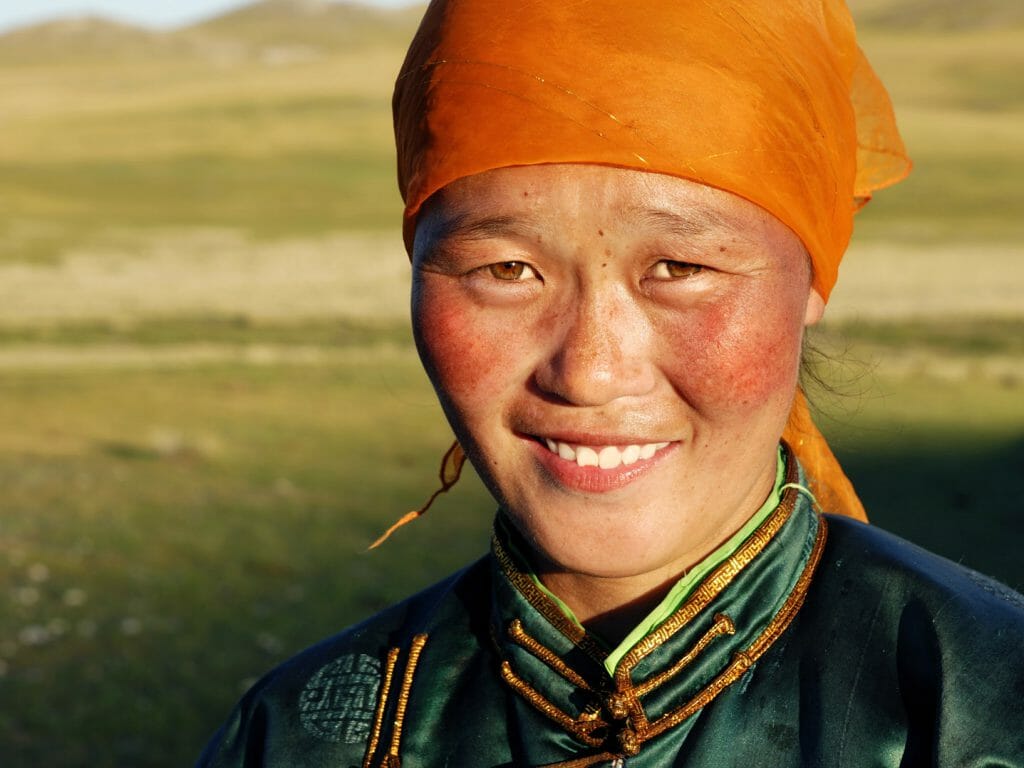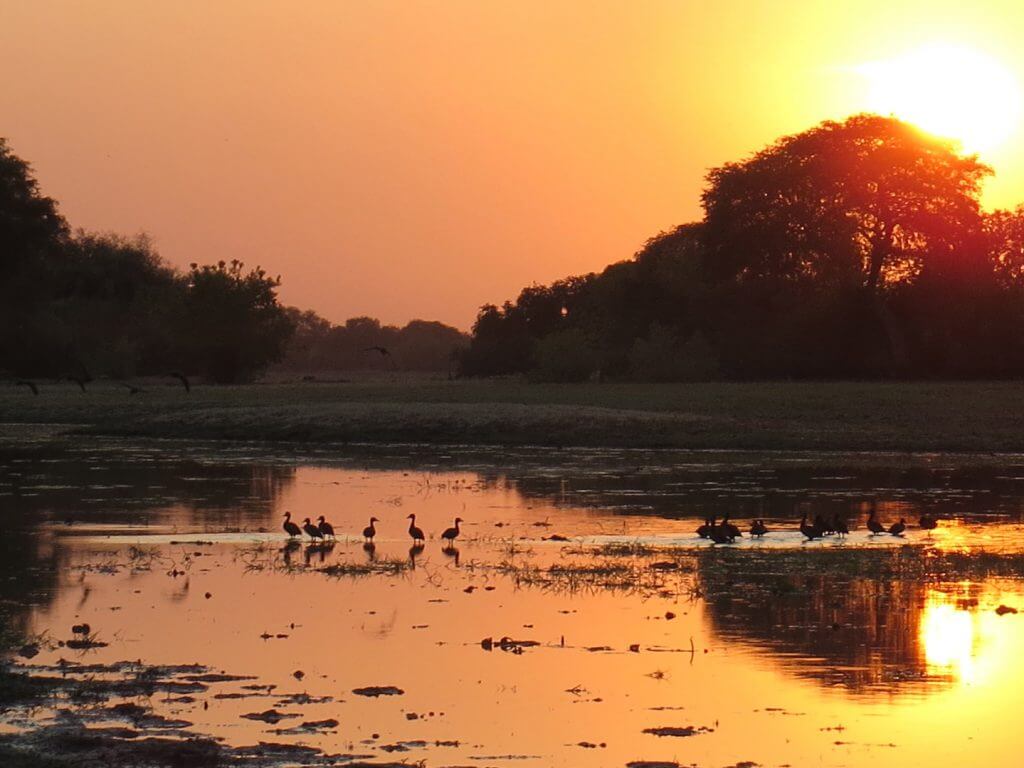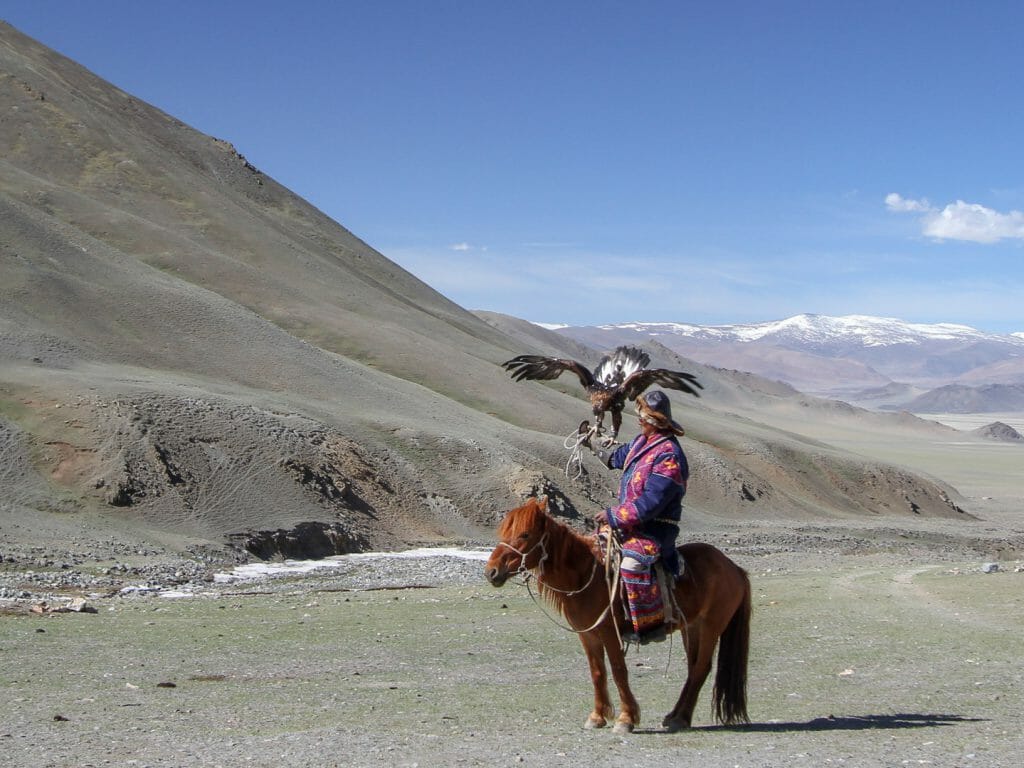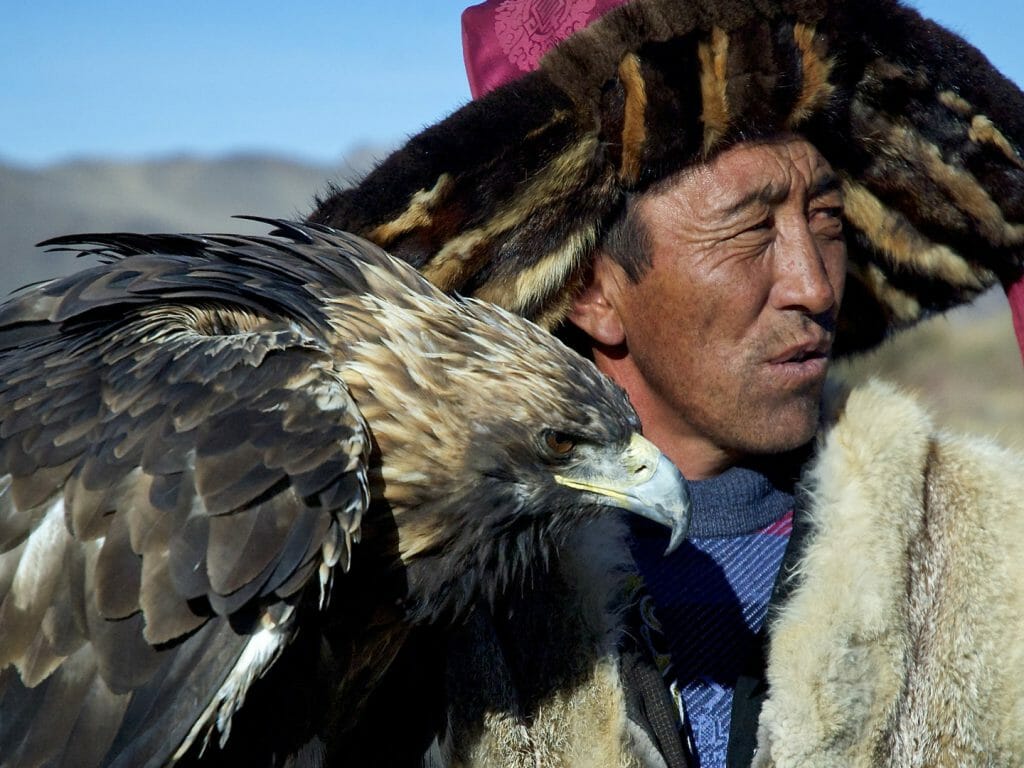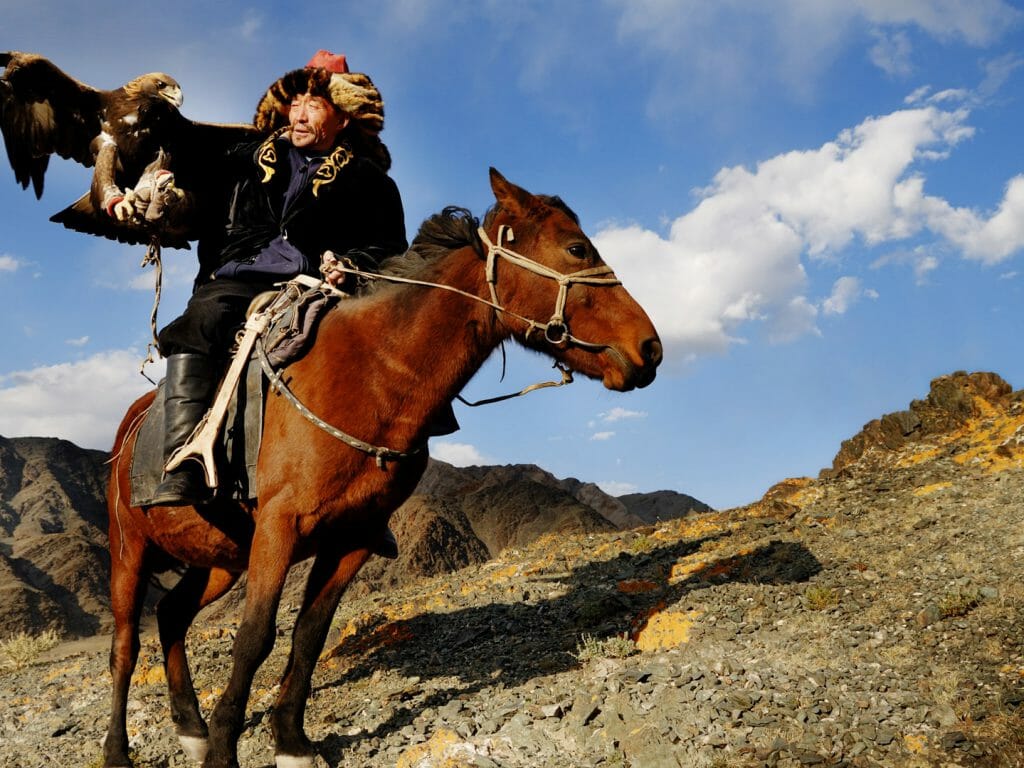The sound of hooves was all I could hear as we left our camp on horseback to make our way to Jalman Meadows. That and the occasional cuckoo. So peaceful and so far away from civilisation. I spotted several gers belonging to local nomadic families as we rode but the rest of the landscape was just beautiful Mongolian steppe, with gentle rolling hills in the distance. The perfect way to start the day.
I had already been in Mongolia for four days at this point, having visited the prehistoric sites around Ikhnart Rocks and a brief overnight stop in Ulaanbaatar. Being in the saddle made a nice change from sitting in the back of a land cruiser; totally necessary due to the amount of off-road driving that is needed to access the tented camps.
Camping is often synonymous with basic tents and cooking over a gas stove – yet these camps are far from that description. The only real connection being that the places we were staying in are fully collapsible and leave no trace of human existence. I was beginning to feel like a true nomad; I was just missing my deel, the name the locals give their long tunics.
The camps had huge accommodation gers with a stove for warmth, plus a sink in one corner. They are all adorned in a traditional style with delicate touches which would put some hotel rooms to shame. Most of them aren’t en-suite – however, there are shower gers and toilets set a small distance away which are more than sufficient. Each camp I visited had a massage ger and library, which offered charging points for electrical devices. The clever use of wind and solar energy rarely letting them down. The restaurant ger served a staggering variety of dishes and the quality impressed all of us around the table. Yes, there was the classic mutton and cheeses in many guises but this was complemented with salads, soups and deserts – and the chefs were never fazed by specific dietary requirements.
The ride to my final camp took us along the Tuul River, which, when high enough, is perfect for rafting and kayaking. At one point, we came across a flock of vultures gathering around their breakfast. Remains left behind by a wolf or fox, no doubt. For us, a reminder that survival in Mongolia is always high on the agenda with the land and seasons being vast and extreme. Two hours later, we were met by the whines of other horses as we arrived at our destination. It seemed like they were happy to be home amongst the rest of their herd. I was just as happy to stretch my legs.
We settled into our gers and then had lunch – following this up by taking in all the activities on offer. To start, we chose to go and meet a local nomadic family to find out exactly what life was like for them. Just a short walk away, our hosts – five children plus parents and grandad – welcomed us into their ger with milk tea and dried curd. Not particularly to my taste but I politely drank and ate as my guide translated our conversation.
After a while, we were escorted back outside to help tend to the animals; it was milking time. Travelling in June meant that there were many calves, fouls and lambs – but this clearly means much work for the herders. There is little opportunity to relax and have fun, especially in spring and summer. It was astonishing to see how the children are at complete ease with the herds and readily help where they can. Seemingly natural horse riders by the age of six, many are set to compete at the Naadam Festival, which takes place in July just outside the capital city of Ulaanbaatar. It is clear to see that determination, strength and pride are key traits for any Mongolian herder and are passed down through the generations through hard work and maintaining traditions.
Living in Mongolia can be hard and as a visitor I only got to glimpse briefly into their lives – but I feel privileged to have had the chance to do so. It’s not the easiest country to travel around yet the rewards have left me wanting more.


